
The Business of Fashion
Agenda-setting intelligence, analysis and advice for the global fashion community.

Agenda-setting intelligence, analysis and advice for the global fashion community.
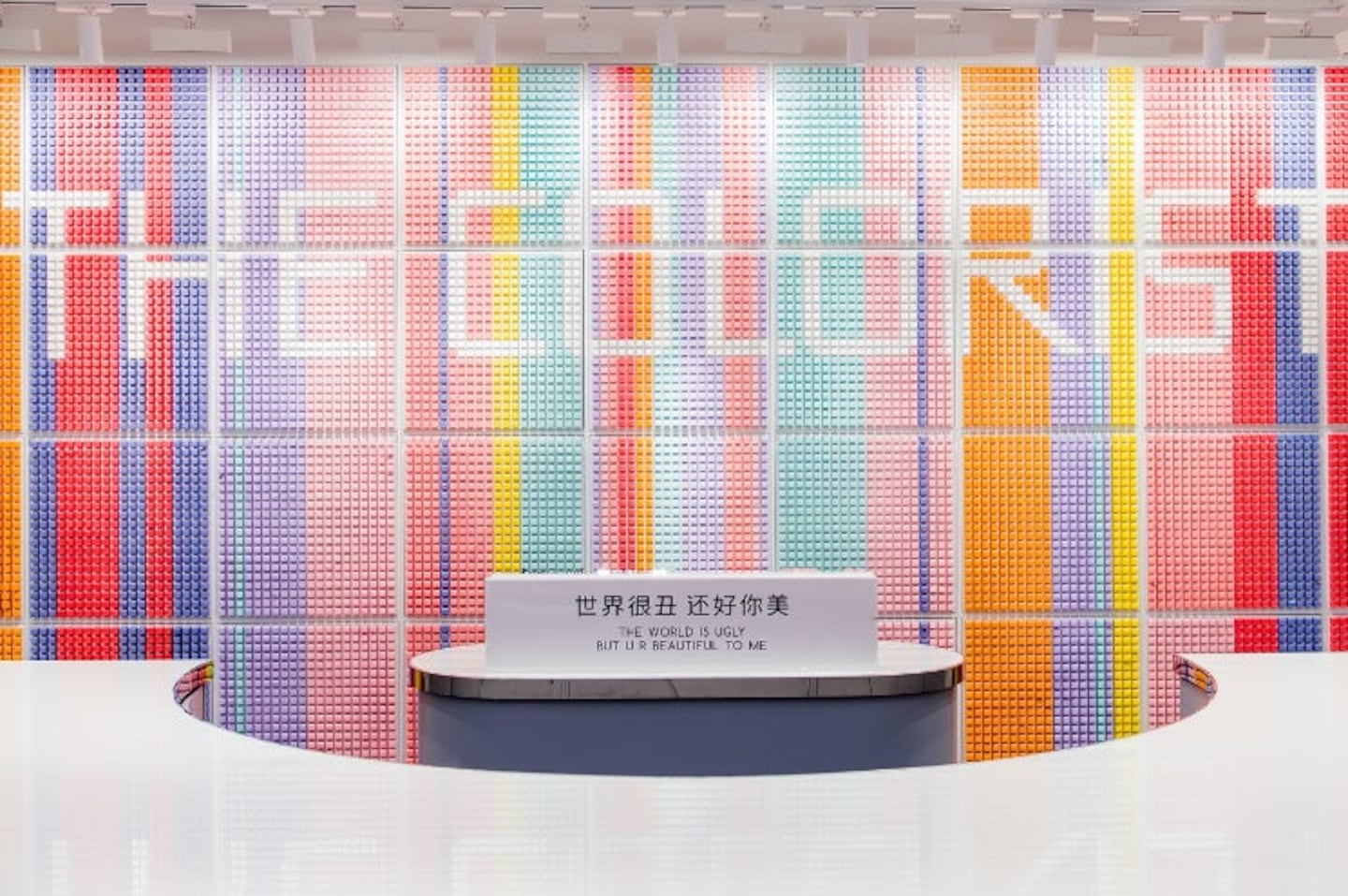
Gary Shi knows more about China’s booming online beauty market than most.
As the former head of Xiaohongshu’s e-commerce unit, Shi witnessed first-hand the digital transformation sweeping the world’s second-largest beauty market and the growing importance of social commerce channels to drive sales.
It would seem like an illogical next move for Shi to abandon that dynamic corner of the market to start his own chain of offline beauty stores just when physical retail was showing signs of serious distress. But that’s exactly what he did weeks before China went into lockdown to control its initial widespread outbreak of Covid-19.
At a time when beauty sales in the mainland were increasingly driven by platforms, livestreaming, cross-border sales and digitally-native domestic players, what was it about the prospect of physical retail that made it a more attractive opportunity than the white-hot online beauty space he helped propel forward?
ADVERTISEMENT
Counterintuitively, Shi says it was his experience in cutting-edge online retail that made him realise how necessary offline channels will continue to be for a new generation of digital-first consumers.
Most of the new online brands in the beauty sector domestically were very strong online, but they had no knowledge of offline.
China’s beauty market (the combined value of its colour cosmetics and skincare markets) was worth 329.7 billion yuan ($51 billion) in 2020 and is set to enjoy a constant annual growth rate (CAGR) of 11.18 percent to 2025, when its total value will reach 560 billion yuan ($86.7 billion), according to data from Euromonitor International.
The proportion of sales going to online channels is expected to only grow after a bumper year of brands migrating online. According to data from Alibaba, more than 3,000 beauty merchants launched new stores on Tmall in 2020.
But as the cost of customer acquisition soars in China’s online space, Shi says he found himself discussing more and more often with Xiaohongshu’s beauty brand partners the relative advantages of the offline space.
“Most of the new online brands in the beauty sector domestically were very strong online, but they had no knowledge of offline,” Shi said.
“Gradually, they began understanding if they want to build their brand more strongly or get their users more familiar with their brand beyond a few top SKUs, they need to have offline so the customers can experience their brand journey and their products,” he added.
In December 2019, Shi quit his job at Xiaohongshu to launch his own offline multi-brand beauty retailer, Heat.
Since opening the first store in July 2020, Heat has rolled out a dozen more in malls across several of China’s major cities, including Chengdu, Guangzhou, Shenzhen, Hangzhou, Nanjing and Chongqing.
ADVERTISEMENT
And Heat’s not the only beauty retail on an expansion spree in China.
Offline multi-brand beauty players proliferate
Sephora, which first entered the Chinese market in 2005, boasts 295 stores in 84 Chinese cities and acts as retail partner for an assortment of mid to high-end international brands, including Givenchy, Guerlain, Algenist and Peter Thomas Roth. It also stocks a limited selection of high-end local brands like Maogeping, a cosmetics brand launched by one of China’s most famous make-up artists, Mao Geping.
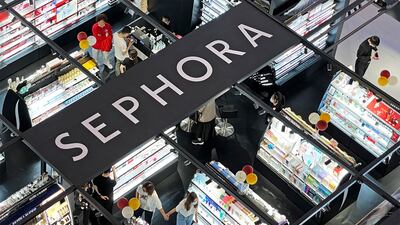
In May, the LVMH-owned retailer unveiled a much-hyped new high-tech flagship store in Beijing’s Sanlitun district. “In the first [half] of 2021, we have successfully opened 23 new stores, entering two new cities. We see substantial potential in this country and we have a grand plan [for expansion],” said Maggie Chan, managing director of Sephora Greater China.
But newer competitors are also moving fast. When asked about the ways in which China’s offline multi-brand market has become increasingly competitive, Chan demurred. “Sephora is the one true omni-channel premium beauty retailer in China, offering seamless experience online and off to engage consumers to explore beyond boundaries,” she said.
Founded only three years ago, Wow Colour and The Colorist are both chains operating franchise models, backed by hundreds-of-millions-of-dollars in venture capital. Each now boasts a footprint of around 300 stores across China.
Wow Colour’s top selling products are likely to be unfamiliar names to many in the west: C-Beauty brands such as Colorkey, Girlcult and Into You, as well as K-Beauty players like Unny Club, feature prominently.
At The Colorist, the brand assortment is similarly heavily skewed towards Asian brands, including C-Beauty (Judydoll), K-Beauty (Pramy and Etude) and even T-Beauty (represented by Thailand’s Zenn brand), sitting alongside mass market western brands like Maybelline.
ADVERTISEMENT
Perfect Diary, which opened its first offline store in late 2019 after finding success as a digital-first C-Beauty brand, has 245 offline stores, and says it is targeting 100 new openings by the end of this year.
“Offline stores are essential for us to interact with customers and provide them with extra experiences, such as trying on our products freely, [but they are also] a place to relax or hang out with friends,” a Perfect Diary spokesperson told BoF.
Though technically a brand rather than a multi-brand beauty channel, a recent spate of acquisitions from cash-rich owner Yatsen Global means Perfect Diary now has a stable of brands, some of which are also distributed through Perfect Diary’s offline stores, making it a potential multi-brand rival.
A similar model is being pursued by Bonnie & Clyde, the multi-brand retail arm of Ushopal, a beauty investment and China market entry firm. Because Ushopal invests in many of the brands it sells in the country — including perfume label Juliette Has a Gun and Spanish skincare label Natura Bissé — both online and across its network of offline Bonnie & Clyde stores (the first of which opened in May, 2020), it benefits regardless of channel.
Bonnie & Clyde consumers… expect to get the same service they would get at Harrod’s, Le Bon Marché or Barney’s.
“We saw this gap in the market for a premium to super-luxury beauty segment retailer, that’s when we launched Bonnie & Clyde,” said William Lau, vice president of brands at Ushopal and chief executive of Bonnie & Clyde, where the average consumer is aged under 30 and the average basket value is said to be around 5,000 yuan ($774).
“Bonnie & Clyde consumers… expect to get the same service they would get at Harrod’s, Le Bon Marché or Barney’s. They see the same portfolio of brands and expect the same level of service,” Lau added.
The trouble for Sephora, according to Gary Shi, is that it might be the avenue for many customers to discover new brands and products, but it’s difficult to retain those customers beyond the first purchase.
“In top-tier cities, people don’t have so much time to explore stores, so if they find something and buy it the first time in Sephora, when they repurchase, they tend to do that online,” he explained.
In China, even more so than in other markets, a follow-up purchase is most likely to happen on the brand’s flagship store on a major e-commerce platform like Tmall, rather than a multi-brand retailer’s own online channel.
But even though there are more competitors than ever before, expanding more aggressively than ever, some believe there might be room for everyone in a market as large as China’s — so long as each player occupies its own segment with distinctive price points and brand offerings.
Direct competitors, or different niches?
“They all have their own unique positioning and their own unique [success] points; this is very important,” explained Lulu Yu, founder and COO of Next Beauty, a partner and investor for emerging beauty brands in China. She is also a former long-time executive at L’Oréal in the country.
“I really respect Sephora. They have trust; they know the brands. We can do a lot of things with Sephora,” Yu said, adding that it would be her first target for the fragrance brands Next Beauty works with, for example.
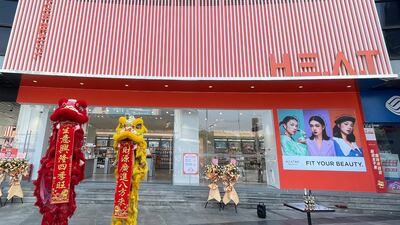
But there are a great number of independent brands currently looking at China market entry (particularly since animal testing regulations loosened on May 1, opening to door for foreign cruelty-free brands to sell there for the first time) that are unlikely to be a good fit for Sephora because of price and positioning. Unsurprisingly, offline retail entrepreneurs like Shi believe that some of these brands could be better suited to local competitors.
“I can’t imagine ColourPop and Sephora coming together and deciding they will make good partners for [offline distribution in China],” Shi said, adding that these kinds of independent beauty brands from overseas are a future target for Heat, which currently stocks mainly C-Beauty brands because their price and positioning suits its Post-95 and Post-00 generation consumer base.
I really respect Sephora. They have trust; they know the brands.
“We want to offer a similar experience to Sephora, but with a different mood. We are not so high-priced, so the young generation can enjoy the good experience with [a] lower price,” he said. “Our objective is to offer easy, approachable brands, regardless of whether they are domestic or international.”
The service element is what Shi says gives Heat an edge; other players, including Wow Colour and The Colorist, offer similar price points and also devote a significant portion of store space to “da ka” (or “check in” experiences, roughly analogous with an “Instagram-friendly” selfie-focused retail setting in the western context), but many of its competitors are more like supermarkets, where people are left to choose products without the intervention of sales associates.
This hands-off approach is also used by Harmay, another chain that has caused a stir in China where the opening of its Beijing store in 2019 was accompanied by hours-long lines. It too is the product of a move from online to offline, having started life as a curated multi-brand Taobao beauty store before becoming an offline beauty chain that currently has six stores in China’s major cities.
Harmay’s point of difference against its competitors, all of whom can be found crowded into China’s top malls in top-tier cities, is that its stores are street side, usually located in popular leisure streets, not necessarily known for retail, but favoured destinations for young people to eat or post selfies on social media.
The retailer’s product range also differentiates it from competitors. Though it stocks high-end international brands, including Fancl and La Mer, it specialises in small, tester and travel sized products, giving access to these products at a lower price point for a young customer base keen on experimentation and discovery.
“[China’s online-to-offline players, such as Heat and Harmay] have a bottom-up approach… They know very well what the consumer wants,” said Gregoire Grandchamp, Yu’s Next Beauty co-founder. “The big difference with Sephora is they think top-down.”
The Future of Multi-brand Beauty Stores in China
Even though it would be fair for Sephora to feel under siege in China, as so many competitors rise to offer products and experiences that are resonating with China’s young beauty consumers, the reality is that these local players are investing heavily in expanding their retail footprints in the same top malls located in the same top-tier cities.
“The competition is very severe,” Gary Shi admits, adding that the combination of high investment costs combined with low average basket values for many multi-brand players means something will have to change in the coming years if all are to survive.
One likely scenario will be for lower-cost beauty retailers to abandon some of the high-priced and highly-competitive first tier malls for wider expansion in China’s lower-tier cities. In third tier cities and below, offline beauty retail is dominated by provincial level chains, which are yet to partner with the kinds of hot young C-Beauty and niche independent international brands young Chinese shoppers crave. Lower tier cities also feature populations with more leisure time for offline shopping.
China’s online-to-offline players have a bottom-up approach…they know very well what the consumer wants. The big difference with Sephora is they think top down.
That’s unlikely to be the path of higher-priced players, such as Bonnie & Clyde and Sephora, which will need to protect their positioning by sticking to top locations for future expansion. For Sephora in particular, it seems that a lot will depend on how they can keep Chinese consumers within the Sephora universe, buying offline but also directly on its own online channels, rather than from a brand’s flagship stores on major platforms.
“I believe that Sephora have a huge advantage talking to foreign brands [that] like talking to a foreign counterpart they are familiar with. [But] they need to leverage this advantage to grow fast but also to develop other advantages,” said Grandchamp.
“[But] I wouldn’t give up on Sephora because of how much money they have behind them,” he said. “Even a company like Yatsen, the money they have compared to LVMH is peanuts.”
时尚与美容
FASHION & BEAUTY
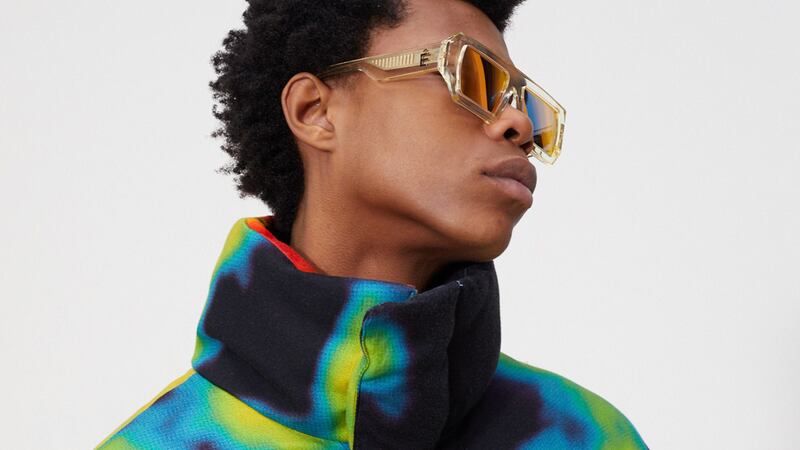
Études Creates Joint Venture with Showroom DFO for China Expansion
The Parisian brand and a division of showroom DFO International, known as DFO 360, are creating a joint venture to explore further market development for Études in China. The two companies will form Études China, which will be headquartered in Shanghai and exclusively distribute Études ready-to-wear and accessories collections in the China market. According to DFO chief executive, Meimei Ding, DFO 360 is a new business unit essentially tasked with shifting DFO’s model from traditional showroom, to more of a showroom-turned-brand accelerator, in the model of showroom and agency Tomorrow, bringing strong international brands to China and priming them for growth in this market, including via capital investments. (BoF)
C-Beauty Brand Into You Secures Funding
Into You last week closed a 30 million yuan ($4.63 million) angel funding round from investors Fosun Rui Zheng Capital and GSR Ventures. Founded in late 2019, the Shanghai-based DTC brand officially opened its online shop on Tmall in mid-May 2020 and has already attracted over 530,000 followers. The brand’s founder, Wen Chong, previously worked for Alibaba for eight years, which may explain why the brand was able to gain rapid popularity on the group’s e-commerce platforms. Known for its lip products, Into You has reportedly expanded into the Japanese and Korean markets and will try to develop channels in Europe, the US and Southeast Asia in the future. (BoF)
科技与创新
TECH & INNOVATION

Chinese E-Commerce Service Giant Baozun Acquires eFashion China
China’s most prominent e-commerce service company has announced an all-cash deal to buy out fashion e-commerce vendor, eFashion China. Shanghai-based eFashion China is an e-commerce solution provider (also called TP or Tmall Partner) focused on bringing international fashion brands to China, its customers include Zimmermann, Lululemon and Arket. Also based in Shanghai, Baozun is China’s largest e-commerce service company, with revenues of 8.85 billion yuan ($1.37 billion) last year and 2020 gross merchandise volume (GMV) of 55.69 billion yuan ($8.62 billion). (BoF)
China’s Biggest Livestreaming Incubators Plan IPOs
The incubators behind two of China’s most popular influencers are making preparations for initial public offerings as competition in the live-streaming e-commerce market intensifies. Meione, the Shanghai-based agency behind China’s “lipstick king” Austin Li Jiaqi, is looking to hire a chief financial officer ahead of a possible US share sale, according to people familiar with the matter. The firm is considering raising as much as $300 million, one of the people said. Meanwhile, Hangzhou-based Qianxun, which houses China’s top influencer, Viya, is also planning an IPO, according to another person with knowledge of the matter. Qianxun, which is backed by billionaire Jack Ma’s Yunfeng Capital, will likely list overseas, the person said. (Bloomberg)
消费与零售
CONSUMER & RETAIL
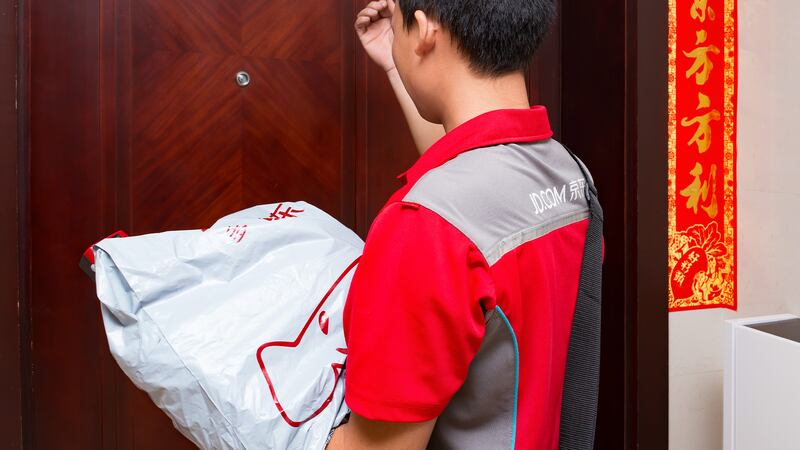
Chinese Consumers Continue to Boost E-Commerce Spending
E-commerce has been the only retail channel to experience rapid growth in China’s fast-moving consumer goods (FMCG) industry since the start of the Covid-19 pandemic, according to a new research report released today by Bain & Company and Kantar Worldpanel. The shift to online continued across all categories into 2021 and is still gaining market share and penetration, the “China Shopper Report Vol I” said. Livestreaming e-commerce also more than doubled in 2020, led by apparel, skin care and packaged food. (Forbes)
H&M’s China Sales Hit as Boycott Bites
Fashion retailer H&M has taken a sales hit in China in recent months, its latest results showed, after consumers there called for boycotts of foreign apparel brands over past comments they made on alleged human rights abuses in the country’s western Xinjiang region. Stockholm-based H&M, which counts China as one of its biggest markets for sales — accounting for 5 percent of sales last year — and one of its two biggest purchasing sources, has been singled out in particular. The company disappeared from e-commerce platform Tmall, while its app has vanished from local app stores. (Reuters)
政治,经济与社会
POLITICS, ECONOMY, SOCIETY
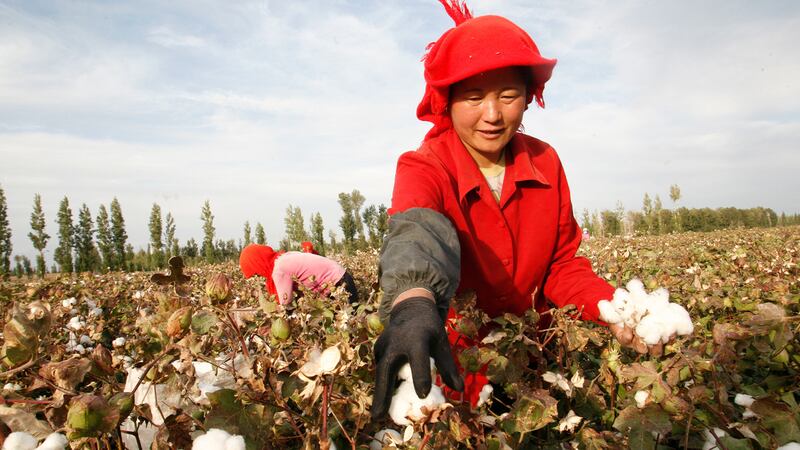
French Prosecutors Launch Probe Into Fashion Retailers’ Xinjiang Sourcing
French prosecutors have launched an inquiry into four fashion retailers suspected of concealing crimes against humanity in China’s Xinjiang region. A source told Reuters Uniqlo France, a unit of Japan’s Fast Retailing, Zara owner Inditex, France’s SMCP and Skechers were the subject of the investigation, confirming a report by French outlet Mediapart. Inditex said it rejected the claims in the legal complaint, that it conducted rigorous traceability controls and would fully cooperate with the French investigation. (Reuters)
Xi Warns China Won’t be ‘Oppressed’ in Anniversary Speech
China’s President, Xi Jinping, delivered a defiant speech at an event marking the centenary of the ruling Communist Party on Thursday, saying Beijing would not allow “sanctimonious preaching”, in remarks widely seen as directed at the US. Relations between the US and China have worsened in recent times over trade, espionage and the pandemic. The issue of Taiwan is also a major source of tension. The US, under its own laws, is required to provide Taiwan with the means to defend itself should Beijing use force to take the island back. On Thursday Mr Xi said China maintains an “unshakeable commitment” to unification with Taiwan. (BBC)
China Decoded wants to hear from you. Send tips, suggestions, complaints and compliments to our Shanghai-based Asia Correspondent casey.hall@businessoffashion.com.
With consumers tightening their belts in China, the battle between global fast fashion brands and local high street giants has intensified.
Investors are bracing for a steep slowdown in luxury sales when luxury companies report their first quarter results, reflecting lacklustre Chinese demand.
The French beauty giant’s two latest deals are part of a wider M&A push by global players to capture a larger slice of the China market, targeting buzzy high-end brands that offer products with distinctive Chinese elements.
Post-Covid spend by US tourists in Europe has surged past 2019 levels. Chinese travellers, by contrast, have largely favoured domestic and regional destinations like Hong Kong, Singapore and Japan.